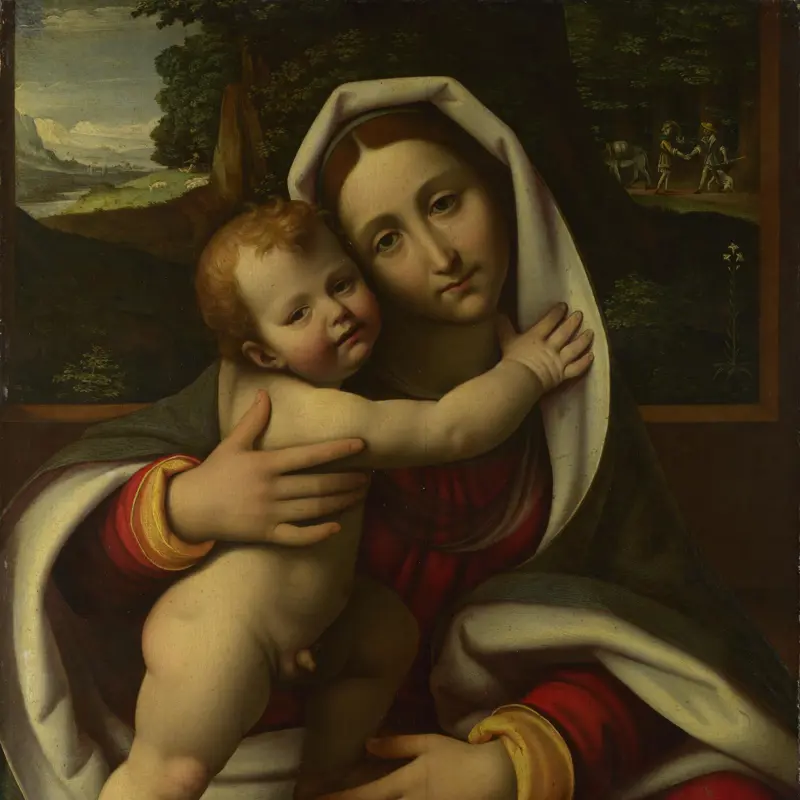Andrea Solario, 'Giovanni Cristoforo Longoni', 1505
About the work
Overview
We know this gentleman’s name – Giovanni Cristoforo Longoni – from the letter he holds, which is addressed to him. His left hand lies flat on the marble parapet before him, drawing attention to his rings, which may indicate his wealth or official status.
The format of the portrait, with its landscape background with a river running through it, was popularised in Italy by the works of southern Netherlandish painter, Hans Memling. But it also reflects the innovations of Leonardo da Vinci, who had spent several years working in Solario’s hometown of Milan, particularly in the sombre and somewhat mysterious landscape with its blue-grey tones.
The Latin inscription on the parapet translates as ‘You know not what sort of person you were or will be; devote much time to an earnest effort to see what sort of person you are’, suggesting the portrait intends to examine Longoni’s image and his soul.
Key facts
Details
- Full title
- Giovanni Cristoforo Longoni
- Artist
- Andrea Solario
- Artist dates
- About 1465 - 1524
- Date made
- 1505
- Medium and support
- Oil on wood (poplar, identified)
- Dimensions
- 79 × 60.5 cm
- Inscription summary
- Signed; Dated and inscribed
- Acquisition credit
- Bought, 1863
- Inventory number
- NG734
- Location
- Not on display
- Collection
- Main Collection
Provenance
Additional information
Text extracted from the ‘Provenance’ section of the catalogue entry in Martin Davies, ‘National Gallery Catalogues: The Earlier Italian Schools’, London 1986; for further information, see the full catalogue entry.
Bibliography
-
1951Davies, Martin, National Gallery Catalogues: The Earlier Italian Schools, London 1951
-
1986Davies, Martin, National Gallery Catalogues: The Earlier Italian Schools, revised edn, London 1986
-
2001
C. Baker and T. Henry, The National Gallery: Complete Illustrated Catalogue, London 2001
About this record
If you know more about this work or have spotted an error, please contact us. Please note that exhibition histories are listed from 2009 onwards. Bibliographies may not be complete; more comprehensive information is available in the National Gallery Library.


